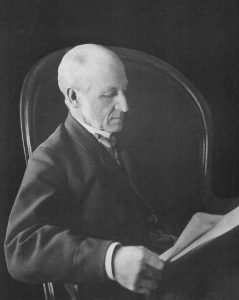
The opening article in the last number of “The Dial,” on Immanuel Kant, was written by James Elliot Cabot, a lifelong friend of Emerson‘s and his biographer. He was born in Boston, June 18. 1821, his father being Samuel Cabot, a successful Boston merchant, and he was graduated at Harvard in 1840. He graduated from the Harvard Law School in 1845, devoted himself to that profession in Boston, and has been a resident of the town of Brookline, one of the chief residence suburbs of that city, for many years. An overseer of Harvard University, a fellow of the American Academy, and active member of the Massachusetts Historical Society and other leaned bodies, he has devoted much of his life to studious pursuits. Cabot was an editor of the short-lived “Massachusetts Quarterly Review” with Emerson and Parker. He has occasionally written for the reviews, including “The Atlantic Monthly” and “North American Review,” but he has given little to the public. For Agassiz’s work on “Lake Superior” he wrote the narrative of the tour. His contributions to the publications of the Massachusetts Historical Society have been more frequent than any others. For some years he was associated with his brother, Edward C. Cabot, well known as an architect.
Cabot is chiefly known to the public as the biographer of Emerson and as the editor of his later works. He prepared “Letters and Social Aims,” 1876, for publication; and he edited all the volumes to appear since that date, including the “Poems,” “Miscellanies,” “Lectures and Biographical Sketches,” and “Natural History of the Intellect,” published since Emerson’s death. In the last chapter of his ” Memoir of Emerson” he gives an account of how he came to aid his friend in preparing his later volumes for publication. Concerning Emerson’s connection with Mr. Cabot, Edward Emerson has said: “One friend, early known, but then seldom met, my father became acquainted with soon after the latter left college and entered on the study of architecture, and was attracted and interested by his character and conversation. My father rarely saw him until after the formation of the Saturday Club, when they met at the monthly dinners, and indeed a principal attraction to Mr. Emerson in going thither was the expectation of a talk with his friend. For years he regretted that their paths so seldom came together, not knowing that his friend was kept in reserve to lift the load from his shoulders in his hour of need, and with his presence and generous aid render his last days happy.” Concerning the special service Mr. Cabot rendered to Emerson, Edward Emerson has written: “It was natural for the family in this emergency to turn to Mr. Cabot. They proposed to him to begin his task [that of Emerson’s literary executor] during my father’s lifetime and put this book in order. He came, and the tangled skein smoothed itself under his hand, and Mr. Emerson, when the work was laid before him with the weak points marked, was able to write the needed sentence or recast the defective one, so that after a few visits from Mr. Cabot the book, which had long presented insuperable difficulties, had taken definite shape, and was ready in season for the publishers. And not only was this done and the long anxiety about the literary executorship dispelled, but to have this friend, whom he had never seen so much of as he desired, thus brought often to his house and drawn nearer was an inexhaustible pleasure. He always spoke of “Letters and Social Aims” to Mr. Cabot as “your book.” Nothing could exceed the industry and skill brought to the task, nor the delicacy and kindness shown throughout, and the peace of mind thus procured made Mr. Emerson’s last days happy. He allowed his children to ask Mr. Cabot to write his biography in the future, and when, with great hesitation and modesty, a consent was given, was well content. He felt towards Mr. Cabot as to a younger brother.”
—George Willis Cooke, A Historical
and Biographical Introduction to the Dial
(Cleveland: Rowfant Club, 1902) v. 2, pp. 181-183

